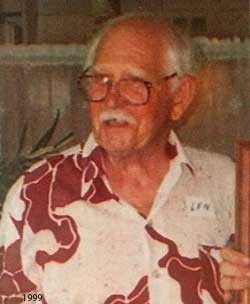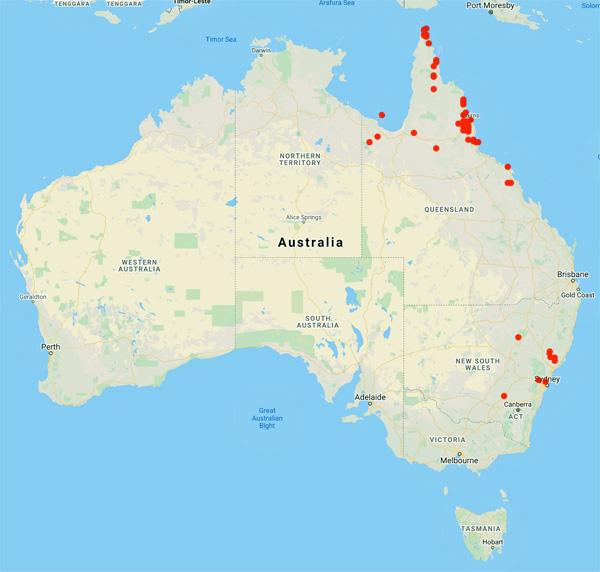
Council of Heads of Australasian Herbaria
Australian National Herbarium
Biographical Notes
 |
Council of Heads of Australasian Herbaria |
 Lawler, Len (1925 - 2011)
Lawler, Len (1925 - 2011)Born 16 December 1925; died 11 December 2011 in Cairns.
During the Second World War Len served with the 1st Australian Field Trials Company based at Gunyarra Experimental Station which was just south of Proserpine in North Queensland. The purpose of the unit was to research aspects of chemical warfare. After the war Len worked in the Biochemistry Department of the University of Sydney. He gained his fellowship of the Australian Institute of Medical Scientists (AIMS) with a thesis titled Biochemical Investigation of Australian Orchidaceae and later was Chairman of the Federal Executive of AIMS. He was involved in a University project which was testing for the presence of alkaloids in orchids and this took him in 1967 to the Sepik River in Papua New Guinea with Andreé Millar and Alick Dockrill.
Len was influential in the early days of the Australian Orchid Foundation which was established in 1976. He conceived the idea for a seed bank and was the first curator. He served on the Research Committee for many years and was chairman from 1981 to 1986.
In 1984 Len Lawler made his mark in orchidology at the world level with his epic study titled Ethnobotary of the Orchidaceae. Len also produced some interesting historical research on orchid identities such as Jack Wilkie, Ken MacPherson, Claude Le Roy and Alf Glindermann.
In 1986 after retiring from the University of Sydney Biochemistry Department, Len moved to Atherton, and a few years later to Tolga. Len became very well known in Queensland running an Australian Orchid Foundation (AOF) sponsored project to catalogue and record the occurrences of rare orchids. He encouraged many local orchid enthusiasts including Lewis Roberts to study the native orchids of their area.
He collected the type specimen of Calochilus ammobius and of Gastrodia urceolata which he and Chris Godfrey found in the Herberton Range in 1988. It was later described by D.L. Jones in 1991 In 1966 Len discovered a small terrestrial orchid near Rossville south of Cooktown. This was described as Malaxis lawleri by P.S. Lavarack and B. Gray in 1984. It is now known as Crepidium lawleri (Lavarack & B.Gray) Szlach. It is considered endangered due to damage to its habitat by feral pigs.
Source: Extracted from:
Laverack, Bill (2013) 'With Strange Device: A history of the discovery of Tropical Australia's Orchids', (Australian Orchid Foundation), Peter S. Laverack, Buderim, Qld
https://australianorchidfoundation.org.au/len-joseph-lawler/
Portrait Photo: Extracted from: above publication
Data from 252 specimens
